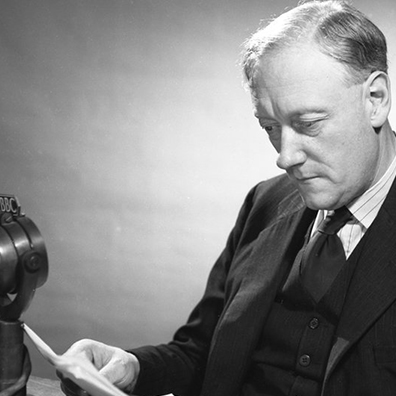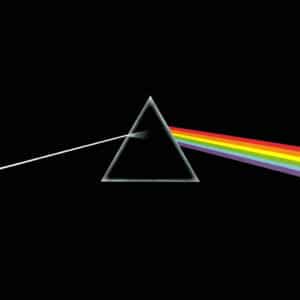

For those of us of a certain age (and I use the word certain very loosely mind you), we have good memories of listening to pop/rock music on a transistor radio. Surprising as it is to young people, apart from a record player, in our day that was the only way to hear anything interesting.
I was born in 1961 and I can well remember my brother listening to the car’s AM radio. It was my first exposure to pop music and it sounded pretty cool. When I finally saved up enough from my newspaper deliveries, I bought a small AM radio for myself. I thought I had the world at my feet and, in many ways, I did—or at least I now had the world at my ear. Why just an AM radio you might ask? Well, they were inexpensive and it was not until the mid-70s that I even learned that there was another radio frequency available—that being, of course, the FM band.
Even though my tin ear for the specifics of music prevented me from identifying the underlying construction of the songs, like everyone else I simply enjoyed listening—what, after all, could there be to dislike about the upbeat tunes of those days? They were punchy and catchy and, just like candy, they came at you in a burst.
Well, if you listened often enough there actually were things to dislike—or at least to be frustrated by. The songs were always about three minutes in length and had a very regular formula to them. After a while, they sounded as if they were being stamped out on an assembly line—one after another much like Lucy in the chocolate factory.
Why three minutes? Well, for years the “single” was the music industry’s standard release. The record companies pressed these singles as vinyl records—the first of which were played at 78 RPM and then eventually at a slower 45 RPM. These small 7 inch discs could hold, you guessed it, about three to four minutes of music per side. With the hope-to-be-a-hit on the A side and the next best song on the B, the music business produced these little wonders by the millions. A record store in the 1950’s and 60’s had these 45’s filed next to each other by the thousands. This excellent Vox article adds more specifics: Why are hit songs 3 to 5 minutes long?
With the corporate and technical side of the industry dictating the length, artists had to craft their songs to fit exactly into this narrow time constraint. Pretty soon, many of the songs sounded eerily familiar to each other. And why not? They certainly had the same basic structure after all.

Lucille Ball
and her valliant attempt on the assembly line!
Each song had a welcoming introduction whose sound was critical in catching your ear. This was followed by a verse of a certain number of bars and then a chorus. Next came a new verse with new words but most likely the same chorus. Now it was time for a bit of a change with either a 15 to 20 second instrumental/guitar solo or else a lyrical bridge with new words. Follow this by a third verse. You needn’t worry about new material though as this could simply be a rehash of the 1st or 2nd verses—quite handy if you couldn’t come up with something original. Round this off with two or three of the aforementioned choruses and you could call it a day—your work was finished. Here, with more accurate terminology, is a brilliant five-minute tutorial on how to construct and write a pop song. You see? I was not exaggerating when I said it was formulaic!
A skilled musician friend reminded me of some other aspects of those early days of rock. A 3-transistor radio did not carry bass very well so, viola, you don’t hear much of the lower registers in songs from this era. Sure, no doubt the band had a bass player, but on the radio you would have been hard pressed to notice his work.
He describes the chord progression as being amazingly simple: “The basic rock and roll sequence musically” he says, “is I-IV-I-V-I.” “These are the chords that are based on the first, fourth, and fifth notes of the scale.” He suggests the original Batman theme song to get an idea of this and, just as he revealed, the structure almost blares itself at you it is so obvious.
The tragedy, or at least serious disappointment, of this era was that record executives were so arrogant and locked in past practices that they did not trust the public’s taste and desire to expand its horizons a bit. “Whose attention span lasts more than three minutes?” was their reply to the technological advancements that allowed longer songs.
Their pigheadedness was ingrained in their DNA and they, and the radio stations, would not budge. Pity the poor artist, no matter how talented he or she might be, who wanted to explore new concepts and make the songs a little longer… tough luck!
Fortunately, not every musical group was laboring under these strictures. The Beatles, of course, had enough horsepower to break new ground and toward the end of the 60’s groups like Pink Floyd and Led Zeppelin (among others) delivered songs longer than ten minutes. They embedded these long-form songs within “themed albums” that were amazingly popular with fans who were thirsting for a little “meat on the bones” in their musical experiences. These bands’ influences, while indeed monumental, did not supplant the old three-minute formula however, but ran parallel to it. Bands like this were simply doing a completely different thing, had a separate audience, and were as far from the general pop sound as one could be.
Miraculously though, artists did start to push back. There are too many to name here, but I can think of two who came to the fore in the mid 1970’s who successfully bridged the gap. Freddie Mercury of Queen and the ever-genial Peter Frampton took advantage of the growing popularity of stereo FM stations to help untie the three-minute straitjacket that listeners had been locked into for so many years. We owe a staggeringly debt of gratitude to them for pulling the rock of the 1960’s into a more modern musical world. Their sheer talent and showmanship forced record execs to face the reality of customers new tastes and the fact that a good ensemble could hold the listening public’s attention with a tune of more than three lousy minutes. What a concept eh?
The road was not easy though. The recent Queen biopic is accurate in portraying the tussle over the length of Bohemian Rhapsody. The record execs apparently really did have the vapours over its length and doubted how it would fit into a radio station’s playlist. “Tough” (or something to that effect…) said Freddie Mercury in 1975 and the rest is history. A year later, when Frampton chimed in with Do you feel like I do? from the Frampton Comes Alive album, the doors of the castle were breached. The pent-up creativity of the artists was coming to the fore and, fortunately, there was no going back. Aside: One of my all-time favorites, you can see Frampton at his good-natured best here.

Peter Frampton
Looking a little older these days…
To give due credit all around, musicians and like Mercury and Frampton were aided in their efforts by the expansion of FM radio stations. Although FM broadcast range is much shorter than AM station (think tens of miles as opposed to hundreds of miles), it carries a stereo signal well and thus was the perfect medium for the depth, texture, and rich sound of what these musicians were creating.
A lot of these FM stations were low-budget enterprises in small markets. Sure, the big cities had large and sophisticated studios and programming, but it was the “little guys” in the out of the way places who were responsible for offering listeners an option-and a great one it was. These little stations were hugely popular and did a lot to drive record sales—thus a virtuous cycle was formed between the listener, the radio station, and the musician.
Sadly, these days the FM stations have now become what the old AM ones were in the 60’s and 70’s—filled with commercials and only offering a limited playlist. I will touch on this in a part 2 on this topic, but I have to say that young people today live in a nirvana of being able to download any music they might wish to hear—without the annoying ads.
Yet as critical as I have been here of the good old pop single, it still has an important place in the world of music. It will arguably be the best song from an album and the one with the best chance for success and generating sales. No one can blame an artist for wanting to put his/her best foot forward and the single is the way to do it.
Although these days the singles no longer come out on a pressed 7 inch vinyl disc but rather in a digital format, the genetics of the free-standing three to five-minute song have not changed as much as you would think.
Not only that, but the structures of modern songs are in some ways just as recognizable as they were “back in the day.” While I find this song from the Beach Boys annoying only because I have heard it 2,498 times, it serves as a good example of all that we have discussed here today: Wouldn’t it be nice Compare and contrast that with a song I actually really like not for the frenetic video, but rather for its driving rhythm and use of the Nicki Minaj’s vocals as an instrument unto itself: Bang Bang
Remarkable isn’t it? For all the sophistication of the modern production skills, Bang Bang still has elements of structure that the Beach Boys were using 50 years ago. Things change, but pleasantly in many ways they don’t…
If you ever plan to time-travel back to the 1950’s and 60’s, be sure to load up your phone with a ton of music from your favorite streaming service. The musical pickings back then were a lot thinner than they are today so take what you need with you!
In the meantime, I try to remain always average, but never mediocre!
![]()







One of the most annoying aspects of the 45’s was the plastic insert required to play the record on a phonograph. In may have been “Inagodadavida” by Iron Butterfly released in 1968 that had a 3 minute broadcast play time and a 17 minute album version that made a lot of us realize it didn’t have to be short to be sweet.
I had completely forgotten about those little plastic inserts. Wow!
I was born 10 years before you Neal and fully recall the amazing progress in music and technology. No one appreciates XM radio, SoundHound, Apple Music, Shazam, or ITunes more than me. And iPods and iPhones (remember Walkman!) were miraculous.
Indeed Bill! Music, video, and talk. A miracle that we can now download two or three hour podcasts to take with or movies/shows that we had missed. An embarrassment of riches these days when it comes to good content–and the content that each individual listener or viewer wants instead of an AM radio station dictating you choice.